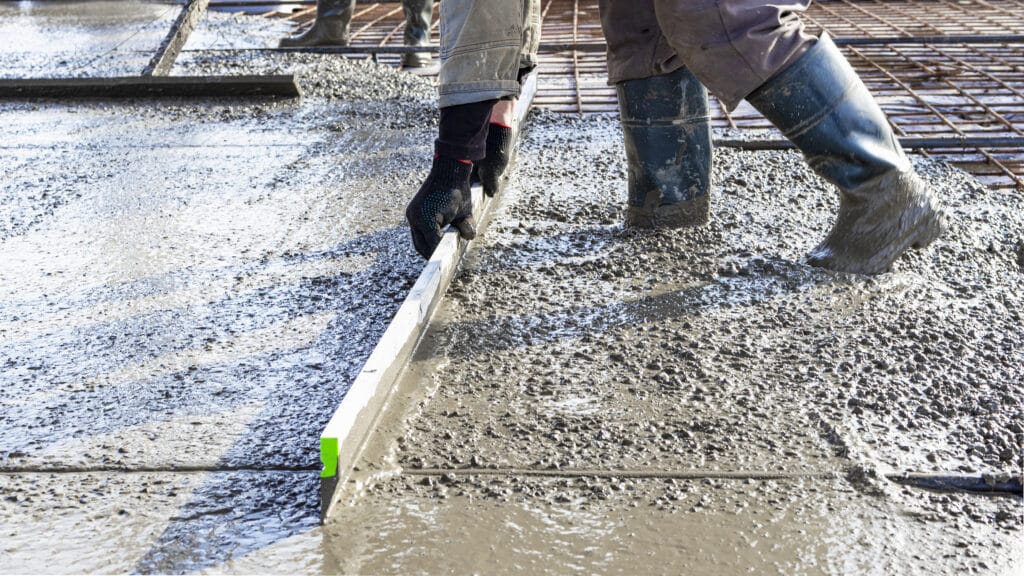As a versatile building material, concrete is an indestructible and robust building material made up of aggregates (rock, gravel or sand), cement and water mixed together in specific proportions to initiate a chemical reaction that binds all these ingredients into an artificial stone-like mass known as concrete.
Concrete’s many qualities make it such a valuable material, such as its durability, wear resistance and immense strength. Furthermore, its fire retardant qualities require only minimal upkeep.
Strength
Concrete slabs Melbourne is a composite material created by mixing cement, aggregates, water and admixtures together in specific proportions. Once mixed, the cement paste coats and hardens aggregates via hydration in an extremely durable rock-like mass that’s widely used for construction projects like bridges, dams and tall buildings.
Concrete has excellent compressive strength, meaning that it can withstand substantial heavy loads without cracking or bending under pressure, but low tensile strength. To increase its ability to resist tension forces more effectively, reinforcement wires or rods may be added for added resistance against tension forces.
Industrial wastes may also serve as alternatives to cement, such as fly ash and ground granulated blast furnace slag (GGBFS). Such substitutes can help improve fresh properties of concrete while decreasing environmental impacts; GGBFS in particular has proven its worth when applied to high strength concrete with lower water/cement ratio that can withstand higher temperatures.
Durability
Concrete is an extremely resilient building material, designed to withstand erosion and other environmental influences. Composed of binding materials (cement, water and aggregates), it hardens through hydration process which hardens it further into place over time. Furthermore, it acts as an excellent thermal insulator reducing energy usage as well as being fireproof.
Concrete has an immense load-bearing capacity and can be found in foundations of low and high-rise buildings alike, as well as sewers and underground construction work. Furthermore, its resistance to salt and oil makes it suitable for sewer lines or utility connections – plus extra strength can be provided via reinforcement with steel rods.
Concrete can also be poured into sidewalk forms, high-rise walls and other structural items for use as walkways or walls. Concrete can also be easily formed into different shapes while still wet for garden ornaments such as statues, gnomes and water fountains – and when mixed correctly is easy to move into place for easier placement. Regular maintenance and repairs must also be carried out to extend its lifespan.
Flexibility
Concrete is an adaptable construction material, capable of meeting many applications. From sidewalk forms, high-rise walls, foundation footings and underground trenches – concrete can be moulded with relative ease because its plastic state makes this possible.
Concrete is a versatile building material, capable of being modified through various additives known as admixtures, including binder additives that can alter its strength, density, or setting time. Binders may contain fly ash or slag or both components to change these attributes of the final product.
Along with being durable, concrete is also environmentally friendly. It doesn’t emit volatile organic compounds (VOCs) or off-gas toxins that could potentially harm building occupants and the environment. Furthermore, concrete is more cost-effective than alternative materials – its lower maintenance and insurance costs for builders reflect this cost effectiveness as does its ability to minimize fire risk by stopping flame spread while simultaneously protecting other buildings and their contents from further damage.
Cost
Concrete is a composite material composed of Portland cement, water and aggregate (gravel, sand or rock). It is typically poured into sidewalk forms, high-rise walls and foundation footings of structures; landscaping shapes can also be created using this versatile building material which has the capacity to withstand earthquakes and hurricanes.
Concrete comes in various varieties and the cost depends on which aggregates and water are added. On average, however, concrete tends to be cheaper than other materials like steel and wood.
Ready-mixed concrete is the most commonly used form of concrete and accounts for three-fourths of all usage. Produced at a concrete plant and delivered via trucks equipped with rotating drums, ready-mixed is often cheaper and quicker to produce at construction sites than mixing on site. However, ready-mixed is much less costly in comparison to onsite mixes which must be mixed before delivery to sites.
